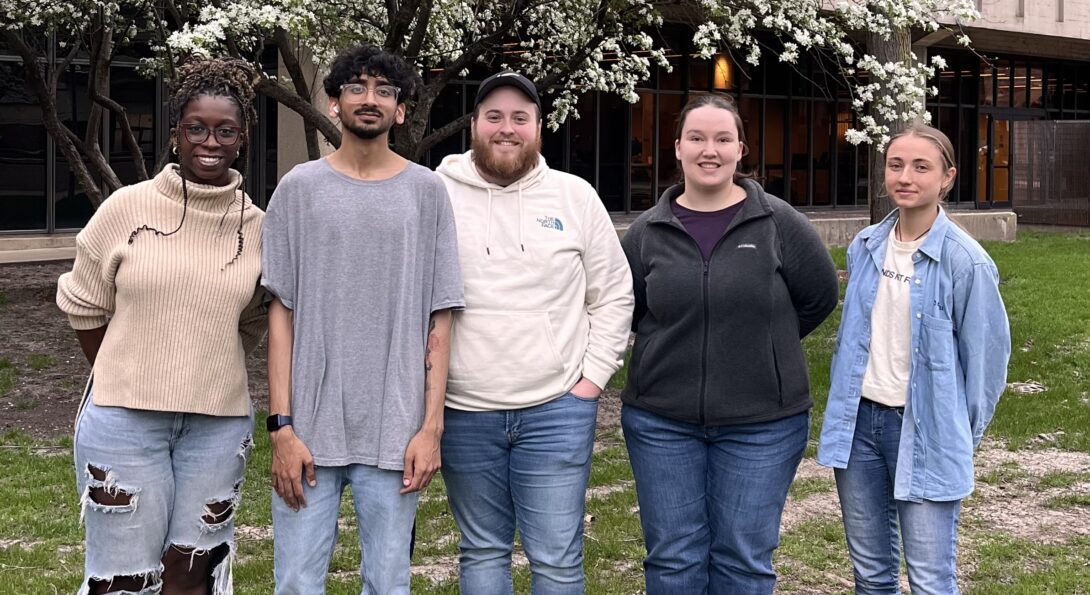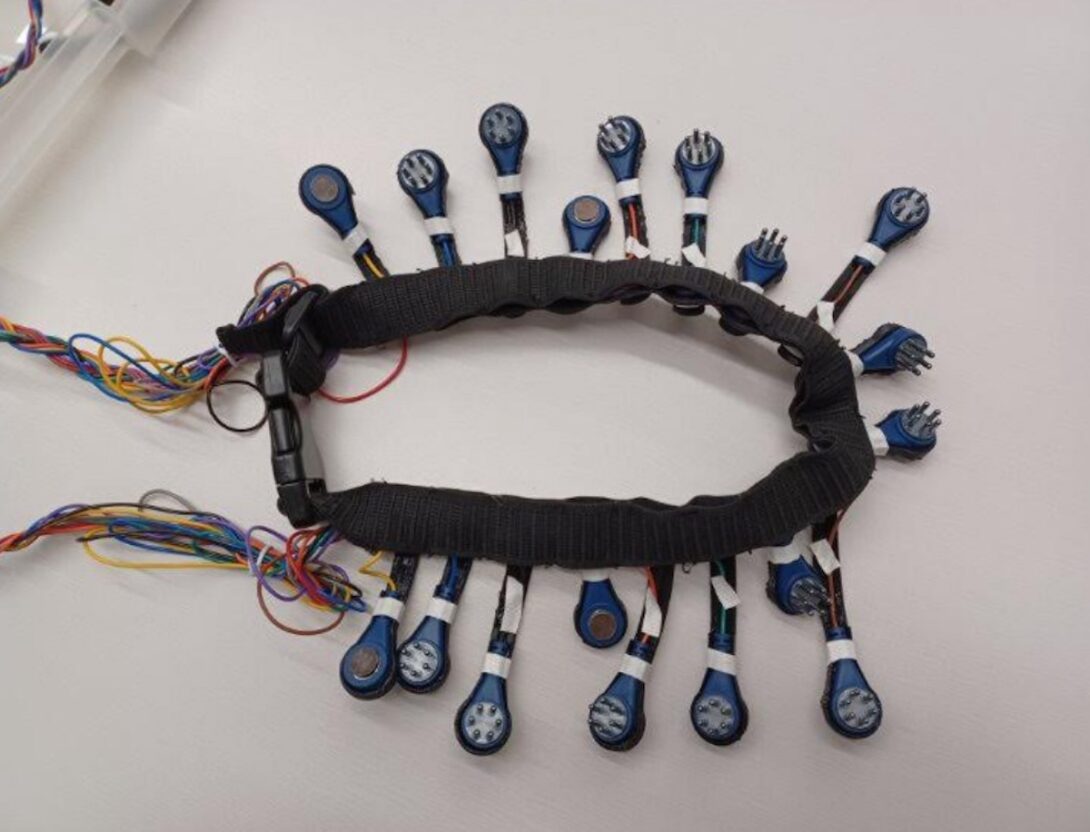Seniors design more inclusive EEG system to cater to more hairstyles, head sizes

block

Richard and Loan Hill Department of Biomedical Engineering seniors Giorgia Asamoah, Aussten Hayes, Madeline Simmons, Abdul Syed, and Elizabeth Wynn worked with Assistant Professor Beatriz Peñalver Bernabé to develop an inclusive electroencephalogram (EEG) system that is compatible with different head sizes and hair types, focusing on Black hairstyles.
According to the National Institutes of Health, “African Americans only make up 15% of the minority participants in clinical trials.”
“Individuals with braids, locs, Afros, twists, wigs, or any other natural or culturally Black hairstyles are often overlooked because of the incompatibility of EEG devices with their hair,” Asamoah said. “A lot of current systems on the market do not have enough adjustability to fit and accurately record signals from people with curlier, thicker hair or larger heads.”
The most common design of an EEG device is in the form of a swim cap, which is found in a large number of hospitals and is used widely in research. This cap is designed to fit best on those with thinner hair or no hair at all. Many participants who need an EEG done for medical purposes but may have a natural hairstyle will either get lower-quality results or no results at all because the cap doesn’t accommodate their hairstyle.
The group began with a headband proposal, a universal design, to improve upon through 3D-printed electrode arms of varying lengths that can easily be removed and attached using the snap buttons along the headband.
The group noted that previously, Peñalver Bernabé’s lab, The Bea Lab, has experienced devices breaking on some participants due to incompatibility.
“Black participants, or any participant with a natural hairstyle like braids, locs, Afros, or wigs, are often left out of EEG research simply due to the incompatibility of current devices,” Wynn said. “This causes research and neuroscience medicine to often exclude Black participants from studies. Without a proper representation of all individuals, no matter their demographic or hair type, research and neuroscience medicine can be biased.”
The group believes that their project is the first small step into addressing the exclusion of certain demographics in research and medicine.
“Our device can record signals on a wider range of participants, which will prevent exclusion of a demographic based on hair type,” Hayes said. “We catered our device to all hair types, styles, and head sizes to increase comfortability and decrease the hassle by using dry electrodes that do not require the patient to wash the gel out of their hair, which improved the overall efficiency of the process.”
These seniors completed their project as part of a required senior design course for all College of Engineering students and will showcase their project at the annual Engineering Expo on Friday, April 19, at the Credit Union 1 Arena.